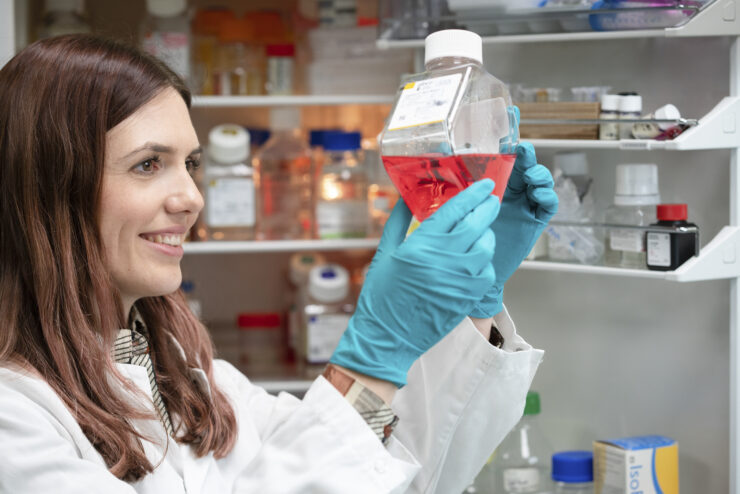News
How dangerous are microplastics? Experts answer questions
How dangerous are microplastics? And why would they affect your health? Dutch news programme EenVandaag asked these and other questions to MOMENTUM researcher Emma Kasteel, toxicologist at Utrecht University, and Martina Vijver, professor in ecotoxicology at Leiden University. We highlight a few of the questions, relevant for MOMENTUM research, here.
Why do microplastics not break down?
Vijver explains that microplastics are formed when larger pieces of plastic weather under the influence of sunlight and rain. “These smaller plastic particles do break down, but this happens very slowly. It can take decades. This is caused by the large quantity of plastic that we produce and the fact that only some micro-organisms can process plastic.” These tiny creatures break down the microplastics into even smaller parts, known as nanoplastics.
Kasteel adds that the smaller these nanoplastic particles become, the slower they break down. “On top of that, it becomes more difficult for researchers to measure the very small nanoparticles that end up in the environment. Therefore, we don’t actually know whether they can break down and at what rate.”

Emma Kasteel performing research on microplastics
How dangerous are microplastics?
“Microplastics are found everywhere in the world: in deep oceans, on high mountain tops, and even at places that are not inhabited by people”, Vijver says. “Even if we were to stop producing and using plastic today, the particles would remain present for future generations.” But we know very little about potential health risks and existing research is inconclusive. Vijver: “a lot of studies have looked at this, some say that microplastics are harmful but others say they are not.”
Why would microplastics affect our health?
Researchers have found plastic particles ending up in our brains, liver, and placenta. Vijver: “Those tiny particles could cause damage, but we have no idea about the type of damage or the severity. The damage from things like pesticides, antibiotics, or plasticizers is more obvious and immediate.” But that doesn’t mean that microplastics cannot cause damage in the long term. “That’s simply not well known yet”, says Vijver. What is clear, is that the smaller the particles, the more potentially harmful they become, as the body has more trouble shielding itself from them.
Kasteel explains that a lot of research is currently underway looking at the effects of both microplastics and nanoplastics on our bodies. “There is an increasing number of signs that plastic particles, especially nanoplastics, have an effect on our bodies. But exactly what damage they cause is still under investigation.”
What can we do about it?
The two experts discuss a few possible solutions. Filtering microplastics out of the air in cities and alongside motorways is one of them. Vijver: “Several types of moss can trap particles, including microplastics, as it sucks in air like a sponge. But we have removed a lot of moss and trees with such purifying properties from our cities.” Artificial filters could be an alternative, but they require large installations that cities often don’t have space for.
Banning plastics from products that end up in our sewage system is not realistic, Vijver and Kasteel think. Microplastics are everywhere and end up in our sewers in many different ways. Not only via breakdown of plastic packaging, but also through products containing microplastics, like scrubs and toothpastes, and the washing of synthetic clothing. Vijver: “I think that not only consumers but also manufacturers have a role in raising awareness about plastic use.”




